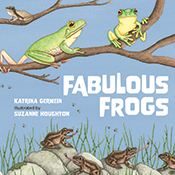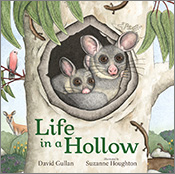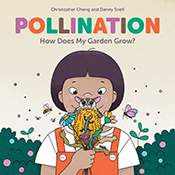Biology and Evolution of Crocodylians

By: Gordon Grigg, David Kirshner
An illustrated summary of the current knowledge on crocodiles, alligators, caimans and gharials.
Biology and Evolution of Crocodylians is a comprehensive review of current knowledge about the world's largest and most famous living reptiles. + Full description
Gordon Grigg's authoritative and accessible text and David Kirshner's stunning interpretive artwork and colour photographs combine expertly in this contemporary celebration of crocodiles, alligators, caimans and gharials. This book showcases the skills and capabilities that allow crocodylians to live how and where they do. It covers the biology and ecology of the extant species, conservation issues, crocodylian–human interaction and the evolutionary history of the group, and includes a vast amount of new information; 25 per cent of 1100 cited publications have appeared since 2007.
Richly illustrated with more than 500 colour photographs and black and white illustrations, this book will be a benchmark reference work for crocodylian biologists, herpetologists and vertebrate biologists for years to come.
Winner of the 2015 Whitley Medal. - Short description
News
This title is no longer available in print format in Australia and New Zealand, but can still be purchased as an eBook.
Customers outside Australia and New Zealand seeking a print copy should contact Cornell University Press (external link).
Reviews
"a wonderful, beautifully illustrated, all-inclusive treatise on the Crocodylia that has already become (and will remain for the foreseeable future) the most important compilation of information and references yet attempted. It will be invaluable to both current researchers and future generations of crocodylian biologists. Easy to read, with cleverly presented personal anecdotes, the book addresses so many components of crocodylian biology that to try and consider any single aspect does not come close to doing it justice... despite working in the area of crocodylian evolutionary biology for over 35 years, I learned more about these animals than I ever imagined by reading this volume.
...Overall, this is a most remarkable publication, one that surely will stand the test of time and be remembered as one of the most important contributions ever in the history of crocodylian research."
Llewellyn D. Densmore, Quarterly Review of Biology, June 2016, pp 229
"The exhaustive treatment and insightful explanations will establish the book as the go-to foundation reference for crocodylian research for many years... this volume meets the challenge it sets by providing a new synthesis of older and recent information and a significant step forward in our understanding of the uniqueness and special function of crocodylians...
This book will take its place on my bookshelf... to become well thumbed and dog eared"
Perran Ross, Crocodile Specialist Group Newsletter, p 6-7
"every now and again, a book appears which is truly, jaw-droppingly amazing... Biology and Evolution of Crocodylians... is an incredible piece of work - very probably the most significant volume ever published on crocodylians, and one of the most complete, thorough and fascinating tetrapod-themed works that's ever appeared. Seriously, this might be the zoology book of the century, and very few animal groups ever get literary treatment this comprehensive and impressive...
While this volume has to be considered 'technical' overall, it's a pleasant and often fun read - the authors include anecdotes, they ask questions when answers are lacking or unclear, and they write in a friendly, conversational style... I simply cannot praise this volume enough."
Darren Naish, Scientific American: Tetrapod Zoology (blog), 8 August 2015
"As a paleontologist, I see two primary goals that Gordon Grigg and David Kirshner’s Biology and Evolution of Crocodylians must achieve for readers. It must serve crocodylian biologists by accurately reflecting and summarizing our current understanding of the evolutionary history of Crocodylia and their fossil relatives. Secondly, the book should serve paleontologists as an exhaustive summation of crocodylian anatomy, physiology, life history, ecology, and conservation. I am happy to say that the authors accomplish both goals, making the book an extremely useful resource for anyone interested in this charismatic group of reptiles... it is one that will serve any paleontologist
seeking a detailed review of all aspects of modern crocodylian biology. The photographs and illustrations also make it a very attractive book
for any natural history enthusiast."
Adam Pritchard, Palaeontologia Electronica, August 2016
Details
ePDF | January 2015ISBN: 9781486300679
Publisher: CSIRO Publishing
Available from eRetailers
ePUB | January 2015
ISBN: 9781486300686
Publisher: CSIRO Publishing
Available from eRetailers
Features
- Specialised illustrations created for the book
- All chapters have been reviewed by relevant biological experts
- Covers a large amount of research done in the past 12 years
Contents
1 The Crocodylians2 The Crocodylian Family Tree
3 Crocodylians Closer Up
4 Locomotion & Buoyancy
5 Sensory Systems
6 Food, Feeding, Digestion & Nutrition
7 Energy Supply
8 Extraordinary Heart
9 Diving
10 Thermal Relations
11 Salt & Water Balance
12 Reproduction
13 Population Ecology
14 Conservation & Management
Authors
Gordon Grigg enjoyed a career as an academic zoologist who managed to spend a lot of time working in the field. After education in Queensland and at the University of Oregon he had 20 years at the University of Sydney and then 20 years at the University of Queensland, where he is now an Emeritus Professor. His primary research interests are in vertebrate zoology, particularly the thermal, respiratory, cardiovascular and salt and water balance physiology and ecology of reptiles and, through work on echidnas, the evolution of endothermy. He has authored or co-authored nearly 200 peer-reviewed publications of which more than a quarter are on crocodylians.David Kirshner developed a fascination with crocodylians at a very young age, despite growing up in Canada. Consequently, after completing an honours degree in zoology he undertook a PhD on crocodylian buoyancy control in Australia, where he still resides. He later combined his interest in zoology with a passion for drawing, painting and photographing wildlife, working as a wildlife illustrator for several years before settling into his current career in zoo and aquarium interpretation. He has illustrated several books on wildlife.








